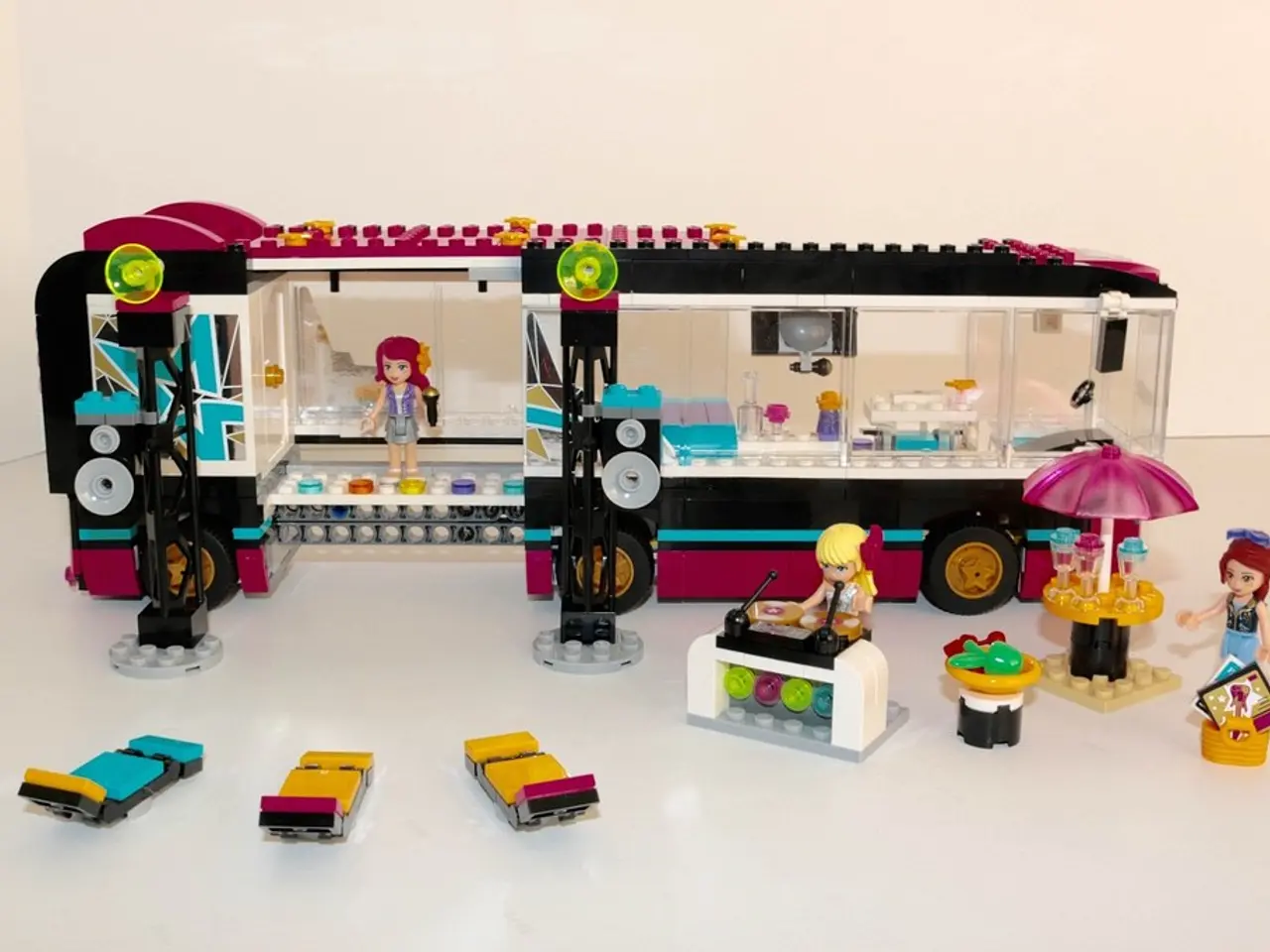Crafting miniature landscapes for Wes Anderson's films – a Neukölln-based production workshop's undertaking
In the world of filmmaking, the intricate details and unique visual storytelling of Wes Anderson's productions have captivated audiences for decades. A key contributor to this distinctive aesthetic is Simon Weisse, a miniature model maker who has been working in the film industry for nearly 40 years.
Weisse, who hails from Berlin, has collaborated with Anderson for over a decade, working on every Wes Anderson production since The Grand Budapest Hotel, released in 2014. His most notable creation is the iconic pink Grand Budapest Hotel, which measures more than four by two metres.
Weisse's team, comprising many trained carpenters, joiners, and metalworkers, is one of the few remaining miniature builders in Germany. They have worked on a variety of projects, from blockbusters like The Hunger Games and The Matrix, to arthouse productions such as Luca Guadagnino's Queer and Wes Anderson's The Phoenician Scheme.
One of their most impressive feats was the creation of a grand industrial setting featuring a dam, railway, and tunnels for Anderson's film Asteroid City. The miniature, built on a scale of 1:8, was 50 metres long and made of steel. Combined with special and visual effects, it realistically depicted water being released from the dam.
Weisse's team also created puppeted models for flying fighter jets and practical ship models, all designed to be filmed largely in-camera to support Anderson's distinct visual style. The process involved meticulous attention to scale, lighting, and speed to seamlessly integrate miniatures with live-action footage.
In The Phoenician Scheme, Weisse was asked at the last minute to create 100 black and yellow striped hand grenades. These hand grenades, made of plastic through 3D printing, became a running gag in the film. In a dramatic scene, Weisse detonated a hand grenade on a six-metre-wide and four-metre-high model of a dam, causing it to explode and flood the screen.
However, after filming is completed, Weisse's models become the property of the production company and are either archived or destroyed. Despite this, Weisse's fear about the future of miniature construction has largely been alleviated, as he is now in high demand and has many projects lined up.
Working with Anderson is not easy, but Weisse admires his precise ideas and the demanding nature of his work. Weisse focuses on making models look good through the camera, rather than just making them look good. This approach aligns perfectly with Anderson's signature aesthetic, producing "invisible" visual effects that look natural and practical rather than relying heavily on digital effects.
Weisse's journey in the film industry began by chance, slipping into the special effects department via the props department due to his father's connection to Rainer Werner Fassbinder. He shifted his focus towards prop making at the turn of the millennium but returned to miniature building when he was commissioned by Wes Anderson for The Grand Budapest Hotel.
Today, Weisse's workshop in Neukoelln houses a few saved models, including yellow and black hand grenades from The Phoenician Scheme, a 3D-printed apple-sized dog skeleton for the animated film Isle of Dogs, and pastel-coloured facades from The Grand Budapest Hotel.
As the film industry continues to evolve, the art of miniature construction remains a crucial part of Anderson's distinctive visual storytelling. With Weisse's expertise and dedication, these tiny masterpieces continue to captivate audiences and contribute to the magic of cinema.
[1] Source: https://www.wesandersonmuseum.com/miniature-making-with-simon-weisse/ [2] Source: https://www.wesandersonmuseum.com/asteroid-city-miniatures-with-simon-weisse/
Simon Weisse's team, known for their intricate miniature models, has collaborated on various projects that span both movies-and-tv and entertainment, including blockbusters like The Hunger Games and arthouse productions such as The Phoenician Scheme and Wes Anderson's films. Their creations often incorporate artificial-intelligence and technology, as evidenced by the 3D-printed hand grenades in The Phoenician Scheme and the grand industrial setting for Asteroid City, built to scale for seamless integration with live-action footage.




